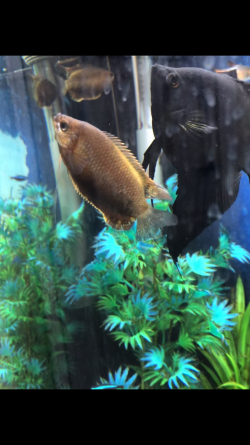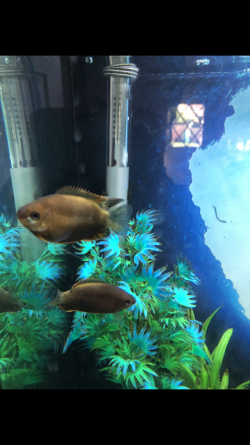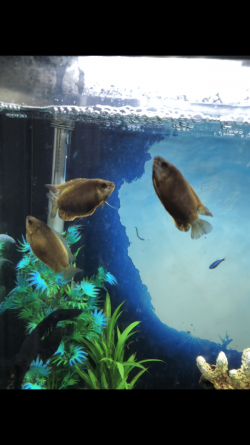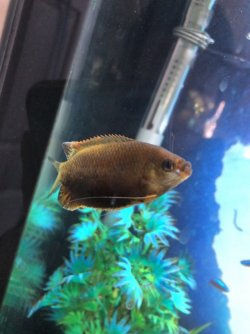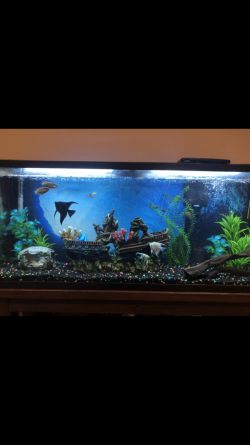Here’s one more picture of the tank!
I have an air stone so I can’t tell if there are any bubble nests. There’s only one gourami that looks chunky and doesn’t have any black on them so I’m assuming it could be the female. I think some plants at the top could be helpful! Thanks for all the support! I’ll keep updates if i notice any changes.
With the angels, plus all the other fish, the eggs wouldn't stand a chance I'm afraid. If you want to breed them, you'll need to set up a breeding tank to move the breeding adults to so they can build a bubble nest, mate and lay, and the eggs not be eaten.
I don't know how most gourami breeders do it, so you'll have to go off and research!

Also bear in mind that they're thick lipped gourami and not honeys, if
@DoubleDutch 's ID is correct, which it normally is.
Breeding them would definitely be a fun challenge

I hope you can, and that it's successful!
Happy to help at least with the advice on floating plants! Believe me, all of the fish will appreciate it, not just the gourami, but it's also lovely to see the gourami elegantly moving around the plants and hunting for bits of food. The floating plants are also great for sucking up ammonia, so they help with water quality too. Once you've had them, you'll never go without them again! lol
Just avoid duckweed. Duckweed is evil and unkillable and messy, makes every water change and maintenance so much harder. Stick to larger floaters like Amazon Frogbit, Salvinia, red root floaters, ones like that.


